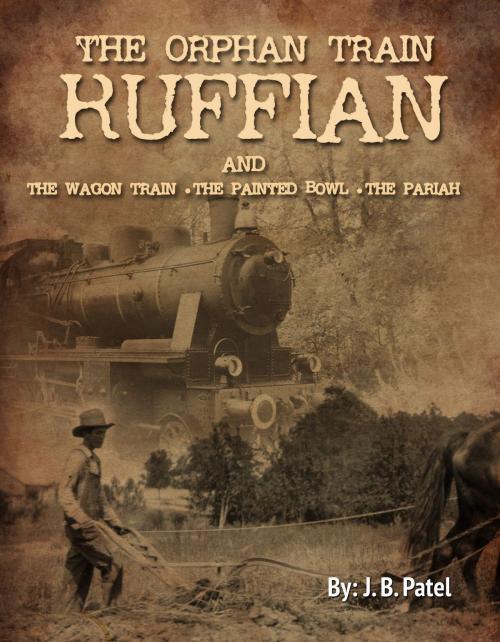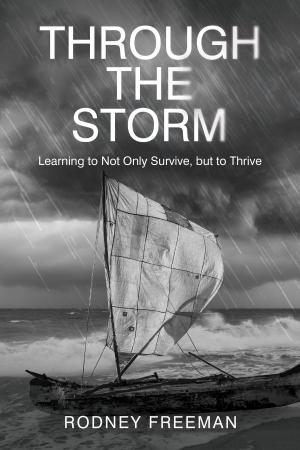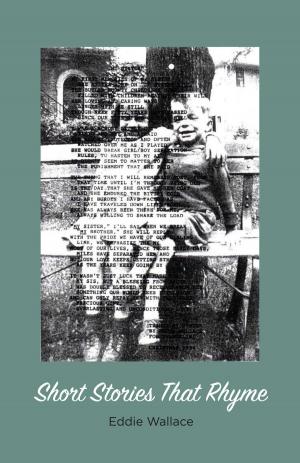| Author: | J.B. Patel | ISBN: | 9781543923681 |
| Publisher: | BookBaby | Publication: | January 15, 2018 |
| Imprint: | BookBaby | Language: | English |
| Author: | J.B. Patel |
| ISBN: | 9781543923681 |
| Publisher: | BookBaby |
| Publication: | January 15, 2018 |
| Imprint: | BookBaby |
| Language: | English |
The Orphan Train ran from 1854 until 1929, according to records at the Monroe County Library in Sparta, Wisconsin, the train stopped taking children from the Sparta facility in 1933. The Orphan Train idea was born in New York which had about 30,000 street orphans in 1854. It is estimated, from 150,000 to 250,000 children from large cities east of the Mississippi were sent west and south on trains to be adopted or indentured. In the late 1800’s a parent or a guardian could merely drop an unwanted child off at state institutions such as the one at Sparta, Wisconsin. The centers would attempt to find a local home, if adoption, or indenture of those over thirteen years old did not occur, the child was put on the orphan train. The train made stops from town to town, children would change into their ‘good’ or ‘show’ clothes and would be put on display. People wanting a child would have them sing or say a poem; they would push, pull, turn, check their teeth, squeeze their arms to check for muscle and otherwise jostle the orphans about to inspect and make selections. At the end of the train run, if nobody chose the child, the child was put back on the train and returned to New York. Some children over twelve were old enough to be indentured, in that case the family receiving the indentured child was supposed to educate them, provide food, clothing and a place to sleep. At the conclusion of the indenture, at eighteen years old the child was free and was on his/her own hook. I have written stories of orphans adopted into good families and stories of children literally used like slaves. As a society we must recall there are actual stories of rejected and disenfranchised children that must be a part of the conscience of a nation such as ours. The four stories in this book are fictional although the basis for much of my writing is taken from actual occurrences. In all four of the stories the lad is somehow orphaned and then indentured. The ‘Orphan Train Ruffian,’ found a way to exist on the streets but is whisked away to be indentured twice into situations worse than slavery. In ‘The Pariah’ a son’s hatred nearly kills the indenture. The indentures luck comes from an acquired ability to accept life as it comes and roll with the punch. In ‘The Wagon Train,’ the indenture has escaped and builds a niche on the train because of his skills. Because of his skills, his keepers want him back at all costs. Intervention comes from an unlikely befriending of an Indian boy. ‘The Painted Bowl’ has a child taken from his mother at birth, for twenty years his life is a turmoil, given his background, his sense of humor and charity seem out of place. Unlike the lives of many of the orphan train children, in these stories and most of the stories I write, everything turns out well in the end. One of the most difficult things to do while trying to write about the orphans is to relate their feelings. It is difficult to communicate how the child would feel, in some instances it is heartbreaking just to attempt to ‘go there.’ Although I’ve had experience in this regard living at the Wisconsin Child Center at Sparta, Wisconsin for nearly six years; in the final analysis, I’ll still probably fail miserably in regard to portraying the joy or the heartbreak of the riders of the Orphan Train.
The Orphan Train ran from 1854 until 1929, according to records at the Monroe County Library in Sparta, Wisconsin, the train stopped taking children from the Sparta facility in 1933. The Orphan Train idea was born in New York which had about 30,000 street orphans in 1854. It is estimated, from 150,000 to 250,000 children from large cities east of the Mississippi were sent west and south on trains to be adopted or indentured. In the late 1800’s a parent or a guardian could merely drop an unwanted child off at state institutions such as the one at Sparta, Wisconsin. The centers would attempt to find a local home, if adoption, or indenture of those over thirteen years old did not occur, the child was put on the orphan train. The train made stops from town to town, children would change into their ‘good’ or ‘show’ clothes and would be put on display. People wanting a child would have them sing or say a poem; they would push, pull, turn, check their teeth, squeeze their arms to check for muscle and otherwise jostle the orphans about to inspect and make selections. At the end of the train run, if nobody chose the child, the child was put back on the train and returned to New York. Some children over twelve were old enough to be indentured, in that case the family receiving the indentured child was supposed to educate them, provide food, clothing and a place to sleep. At the conclusion of the indenture, at eighteen years old the child was free and was on his/her own hook. I have written stories of orphans adopted into good families and stories of children literally used like slaves. As a society we must recall there are actual stories of rejected and disenfranchised children that must be a part of the conscience of a nation such as ours. The four stories in this book are fictional although the basis for much of my writing is taken from actual occurrences. In all four of the stories the lad is somehow orphaned and then indentured. The ‘Orphan Train Ruffian,’ found a way to exist on the streets but is whisked away to be indentured twice into situations worse than slavery. In ‘The Pariah’ a son’s hatred nearly kills the indenture. The indentures luck comes from an acquired ability to accept life as it comes and roll with the punch. In ‘The Wagon Train,’ the indenture has escaped and builds a niche on the train because of his skills. Because of his skills, his keepers want him back at all costs. Intervention comes from an unlikely befriending of an Indian boy. ‘The Painted Bowl’ has a child taken from his mother at birth, for twenty years his life is a turmoil, given his background, his sense of humor and charity seem out of place. Unlike the lives of many of the orphan train children, in these stories and most of the stories I write, everything turns out well in the end. One of the most difficult things to do while trying to write about the orphans is to relate their feelings. It is difficult to communicate how the child would feel, in some instances it is heartbreaking just to attempt to ‘go there.’ Although I’ve had experience in this regard living at the Wisconsin Child Center at Sparta, Wisconsin for nearly six years; in the final analysis, I’ll still probably fail miserably in regard to portraying the joy or the heartbreak of the riders of the Orphan Train.















